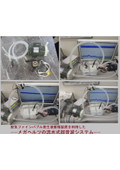Technology that utilizes (optimizes) multiple different frequency "ultrasonic transducers."
USSI
Based on sound pressure measurement analysis, ultrasonic optimization technology allows for the efficient and stable use of ultrasound tailored to specific purposes.
The Ultrasonic System Research Institute has developed a technology that utilizes "ultrasonic transducers" of multiple different frequencies. This technology, in addition to standing wave control technology, adjusts the output of each ultrasonic transducer to vary the nonlinear effects of cavitation and acceleration according to specific purposes. By using ultrasonic transducers with a frequency of 40 kHz and an output of 50-600 W, it is possible to disperse a 1-millimeter diameter metal tube into a 1-micron state, as well as to clean it without causing damage. Through original measurement and analysis technology for ultrasonic propagation states, we are confirming various ultrasonic utilization technologies tailored to the unique characteristics of the transducers. This is a new ultrasonic technology that, including the general effects of ultrasonic dynamic characteristics, can be utilized and developed as a distinctive operational technology for the development of new materials, stirring, dispersion, cleaning, chemical reaction experiments, and more. Ultrasonic propagation characteristics: 1) Vibration modes (changes in self-correlation) 2) Nonlinear phenomena (changes in bispectrum) 3) Response characteristics (analysis of impulse response) 4) Interactions (analysis of power contribution rates)
Inquire About This Product
basic information
<System Overview Reference Example> Ultrasonic Dedicated Tank: 1000*620*470 (h) mm Ultrasonic Frequency: a) 28 kHz, b) 40 kHz, c) 72 kHz Ultrasonic Power Supply/Output: AC 100V, 300W each Liquid Circulation Pump System (including fine bubble generation control device) Timer (includes know-how explanation regarding setting conditions for 1 hour) Materials (ultrasonic cleaning technology, measurement and analysis of ultrasonic propagation conditions) The surface modification treatment of the ultrasonic dedicated indirect tank and ultrasonic transducer requires more than 10 days for adjusting acoustic characteristics. <<Explanation of Deaeration Fine Bubble Generation Liquid Circulation Technology>> Appropriate liquid circulation and the diffusibility of fine bubbles achieve a uniform state of the cleaning solution. By propagating ultrasonic waves through the uniform liquid, a stable ultrasonic state is generated. From this state, liquid circulation control is performed to realize the desired ultrasonic effects. (Achieving a uniform sound pressure distribution throughout the tank, optimizing ultrasonic waves, liquid circulation pumps, fine bubbles, etc. The operational control becomes the know-how for individual tanks.) Confirmation of the desired ultrasonic state is conducted using the original device: ultrasonic measurement and analysis system.
Price information
Feel free to contact us.
Delivery Time
※Feel free to contact us.
Applications/Examples of results
2008. 8 Established the Ultrasonic System Research Institute ... 2012. 1 Started manufacturing and selling ultrasonic measurement and analysis systems (Ultrasonic Tester NA) ... 2024. 6 Developed optimization and evaluation technology related to tanks, ultrasound, and liquid circulation 2024. 7 Developed an ultrasonic probe using components with iron plating on polyimide film 2024. 8 Developed a "megahertz ultrasonic control" method applying Shannon's juggling theorem 2024. 11 Developed megahertz flow-type ultrasonic (underwater shower) technology 2024. 11 Developed ultrasonic sound pressure data analysis and evaluation technology considering interaction and response characteristics 2024. 12 Developed nonlinear oscillation control technology for ultrasonic probes 2024. 12 Developed surface inspection technology based on ultrasonic propagation conditions
Detailed information
-

<< Application of Shannon's Juggling Theorem >> F: Ultrasonic oscillation/output time D: Circulation pump operating time H: Basic cycle (occurrence of cavitation and peak acceleration) V: Degassing (microbubble generation liquid circulation) device operating time N: Number of oscillators with different ultrasonic (oscillation) frequencies
-

Ultrasonic transducer installation techniques for optimizing the effects of cavitation and acceleration (acoustic flow) through the method of installing ultrasonic transducers.
-

Ultrasonic control model based on the classification of ultrasonic propagation phenomena.
-

Ultrasonic oscillation system
-

Original ultrasonic system
-

Original ultrasonic system
-

Original ultrasonic system
-

Original ultrasonic system
-

Original ultrasound system
catalog(27)
Download All Catalogs



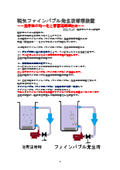
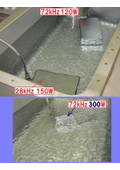

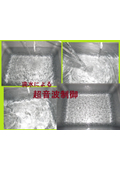



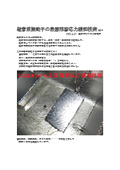
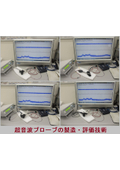
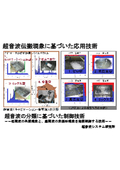

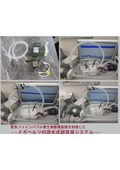
News about this product(31)
Company information
The Ultrasonic System Research Institute conducts the following activities with its original product: ultrasonic systems (sound pressure measurement analysis, oscillation control): 1) Manufacturing and sales of ultrasonic systems (sound pressure measurement analysis, oscillation control) 2) Consulting services for various equipment (Note): cleaning machines, stirring devices, processing equipment, machine tools, plating devices, welding devices, etc. Ultrasonic System (Sound Pressure Measurement Analysis, Oscillation Control) We manufacture and sell a system that combines the "Ultrasonic Tester NA (recommended type)" for easy measurement and analysis of ultrasonic waves and the "Ultrasonic Oscillation System (1 MHz, 20 MHz)" for easy oscillation control. <Patent Applications Filed> Patent Application No. 2021-125866: Ultrasonic Control (Ultrasonic Oscillation Control Probe) Patent Application No. 2021-159990: Ultrasonic Welding Patent Application No. 2021-161532: Ultrasonic Plating Patent Application No. 2021-171909: Ultrasonic Processing Patent Application No. 2021-175568: Flow-type Ultrasonic Cleaning Some of the manufacturing technology for the ultrasonic oscillation control probe is described in Patent Application No. 2021-125866. Patent Application No. 2023-195514: Ultrasonic Plating Using Megahertz Ultrasonic Waves and Fine Bubbles.











